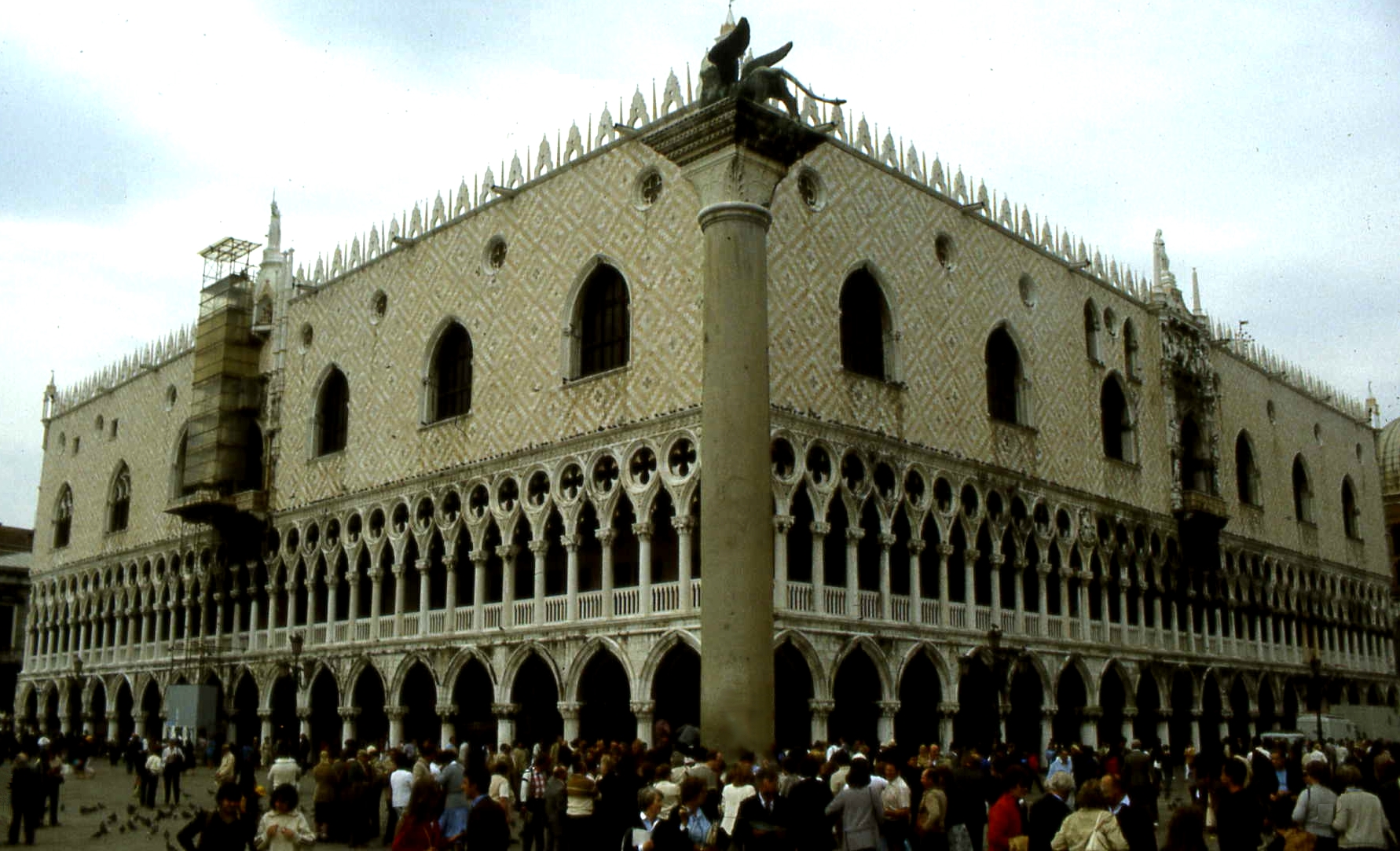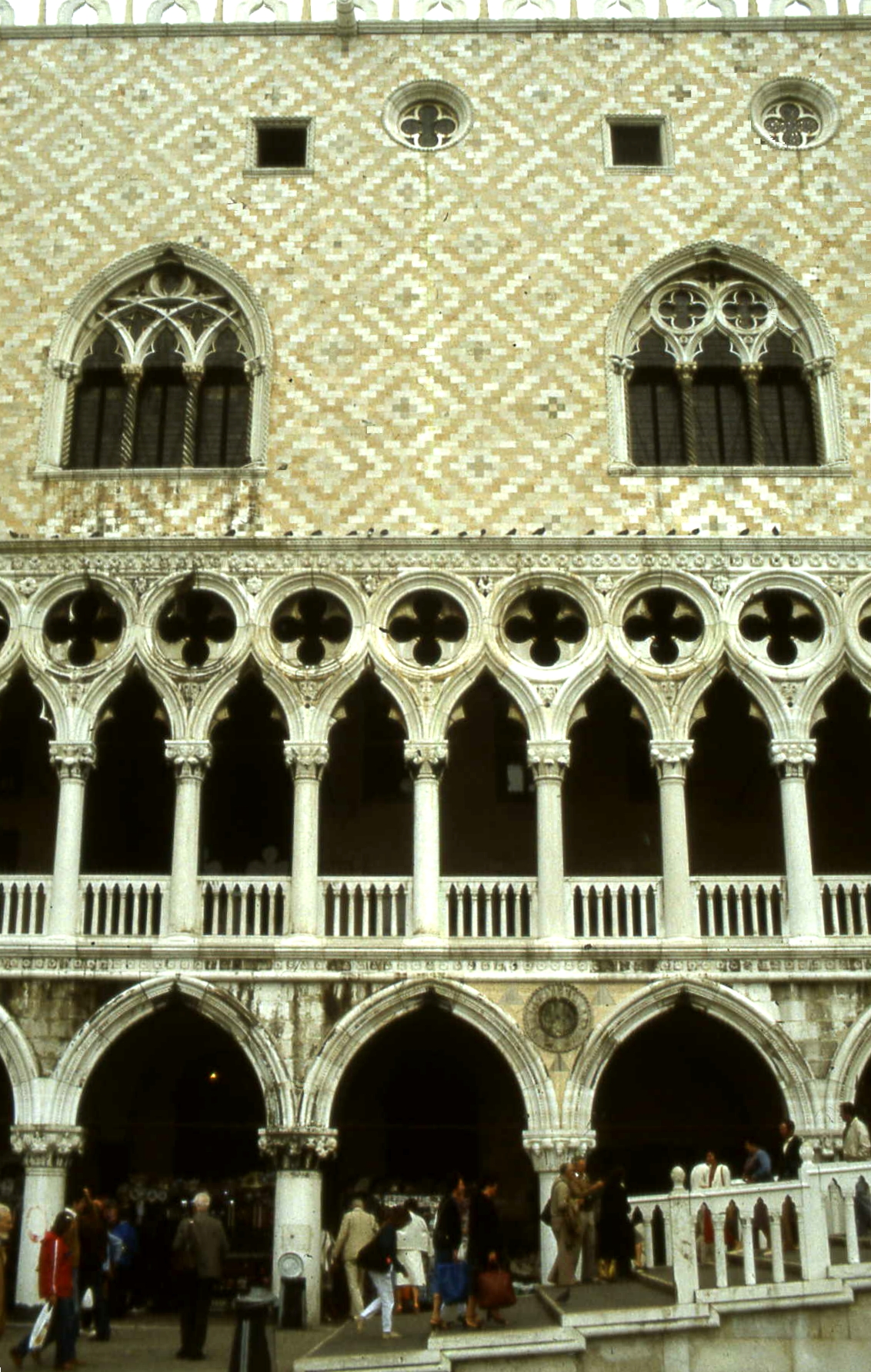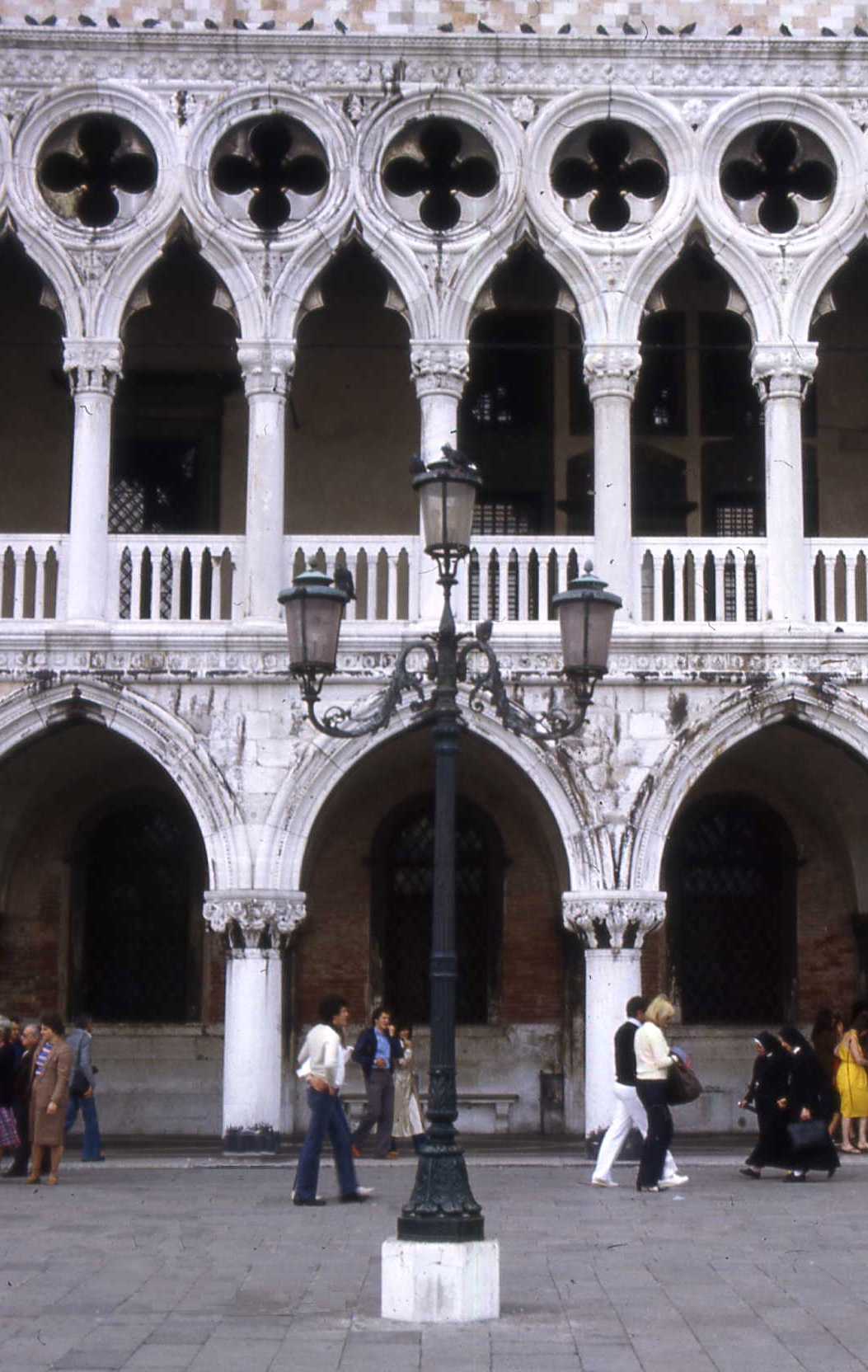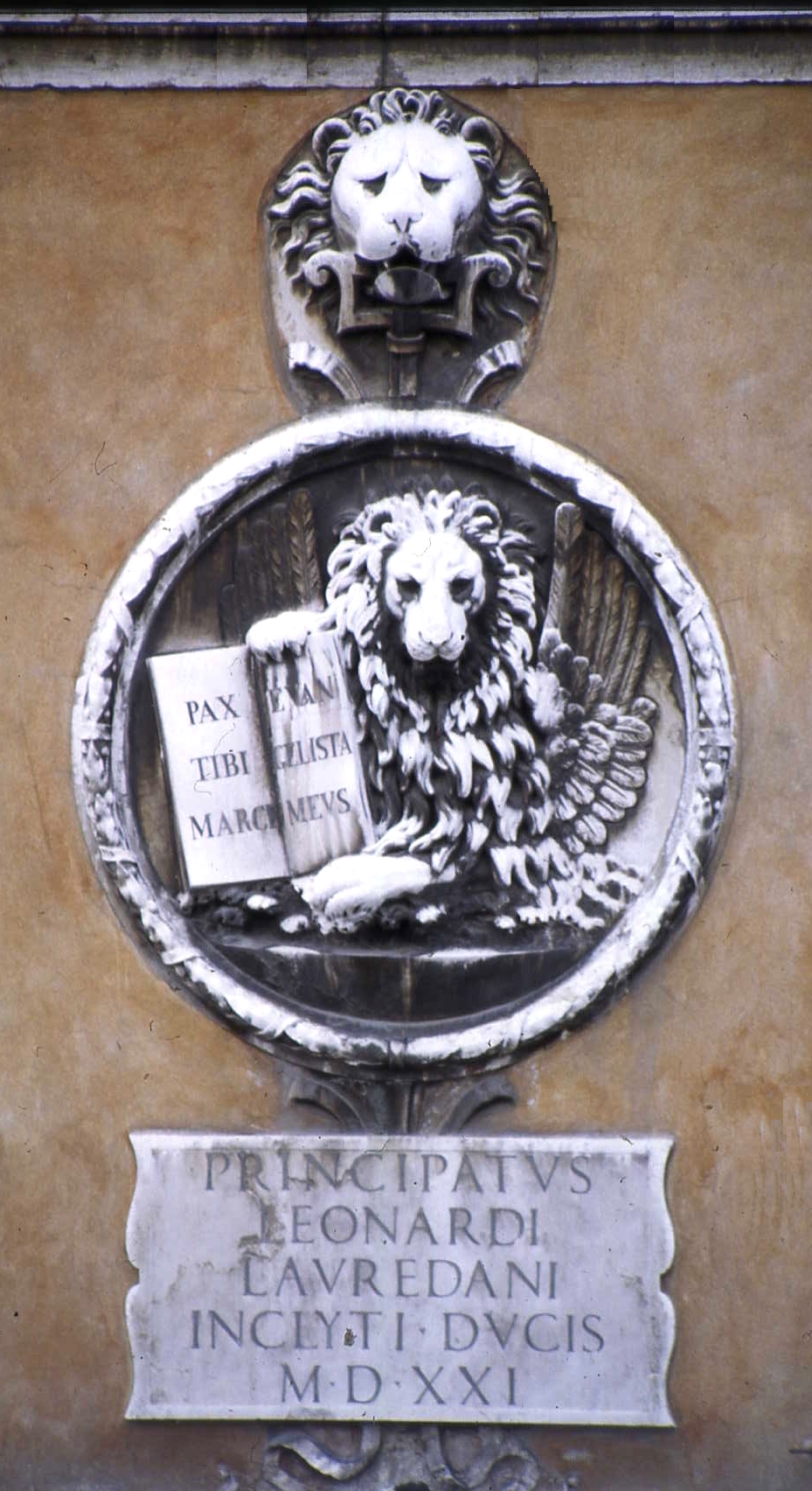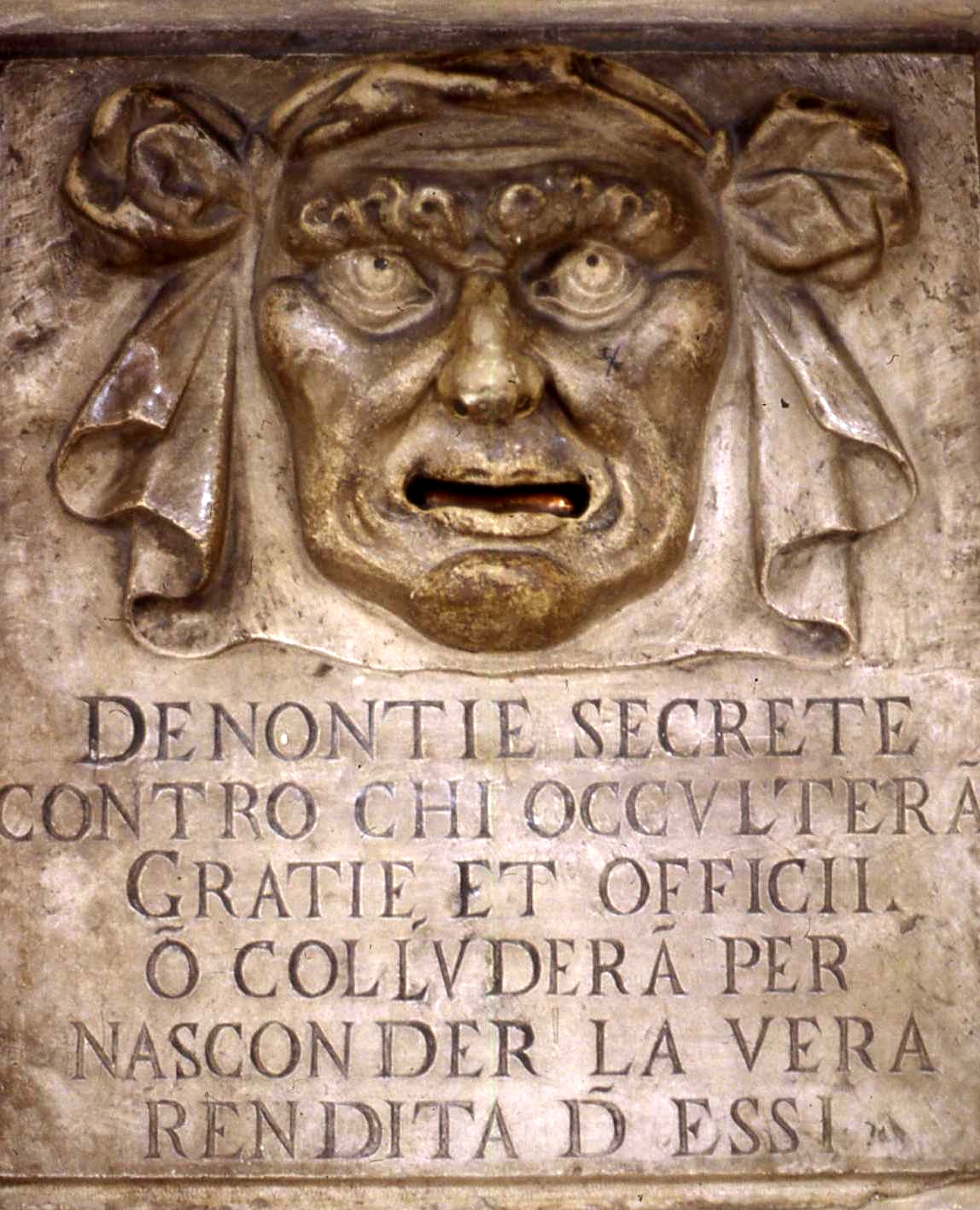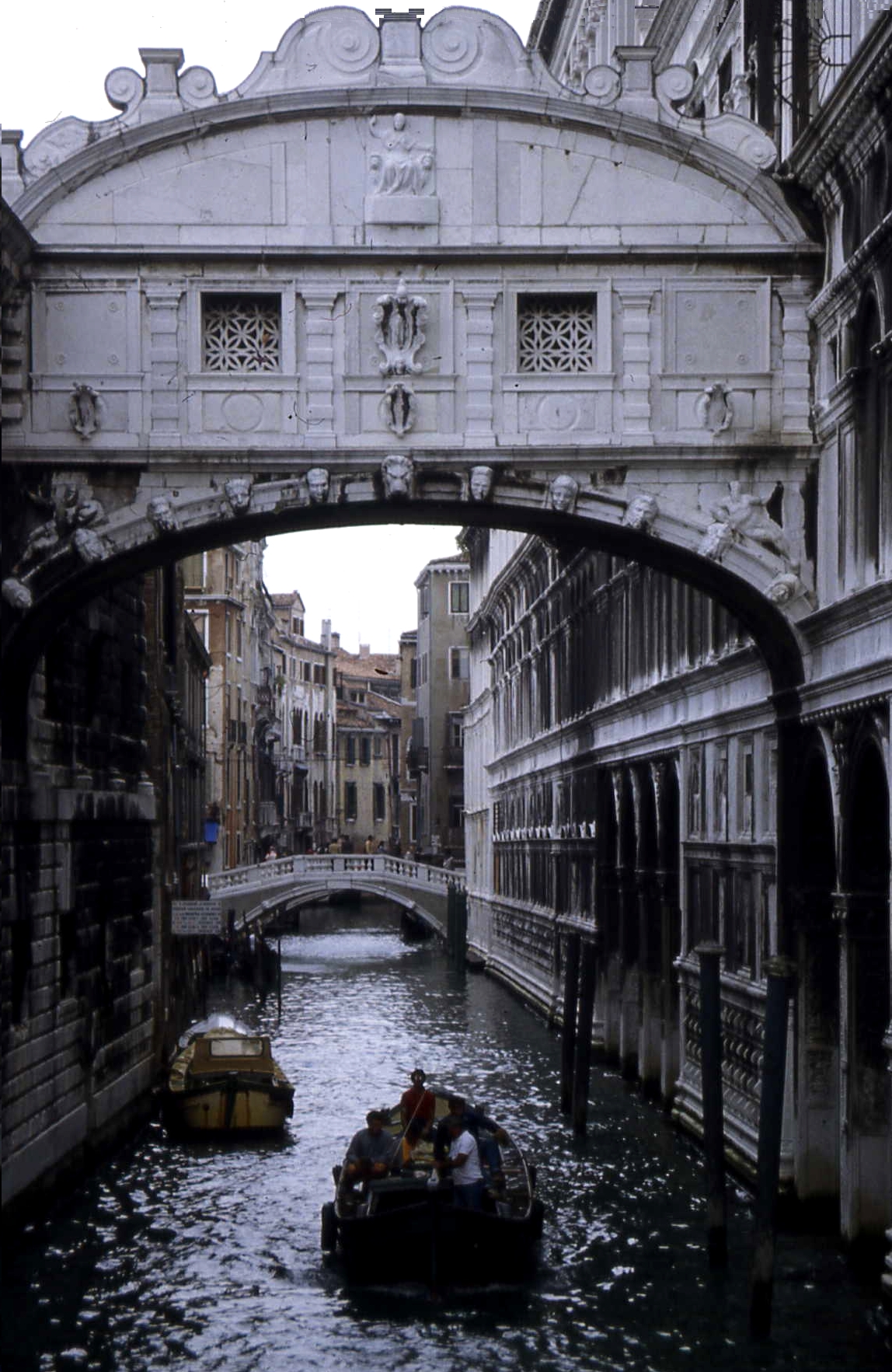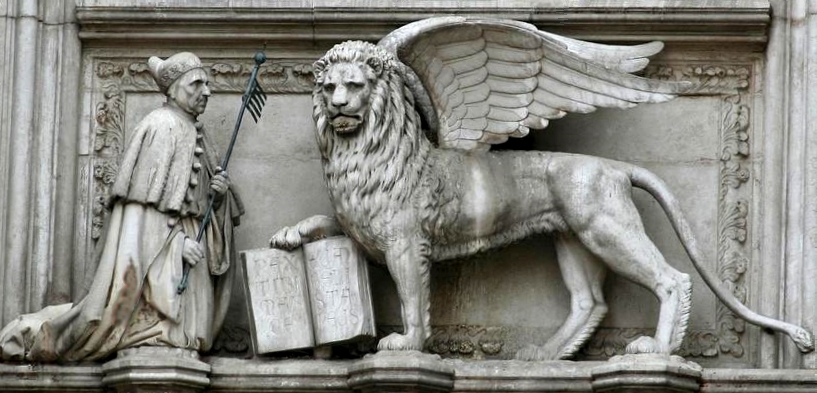PALAZZO DUCALE
from about 700 to 1797, the republic of venice was governed by a council, made up of members of the noble families. one member of the great council was elected as "doge" (from latin dux = leader), as the head of the city, who normally held the title until his death.
the doge and the main governmental institutions resided in a large palace building, called palazzo ducale, on the south-eastern side of the marcus square. it is a very fine piece of architecture, and over the centuries got enriched with countless sculptures and paintings.
yet the palace also included a prison. in 1614, the (in)famous "bridge of sighs" was added, a connection above a canal to a new prison in the next building. finally, of course the palazzo ducale contains several figurines of the symbolic winged lion.
the doge and the main governmental institutions resided in a large palace building, called palazzo ducale, on the south-eastern side of the marcus square. it is a very fine piece of architecture, and over the centuries got enriched with countless sculptures and paintings.
yet the palace also included a prison. in 1614, the (in)famous "bridge of sighs" was added, a connection above a canal to a new prison in the next building. finally, of course the palazzo ducale contains several figurines of the symbolic winged lion.
